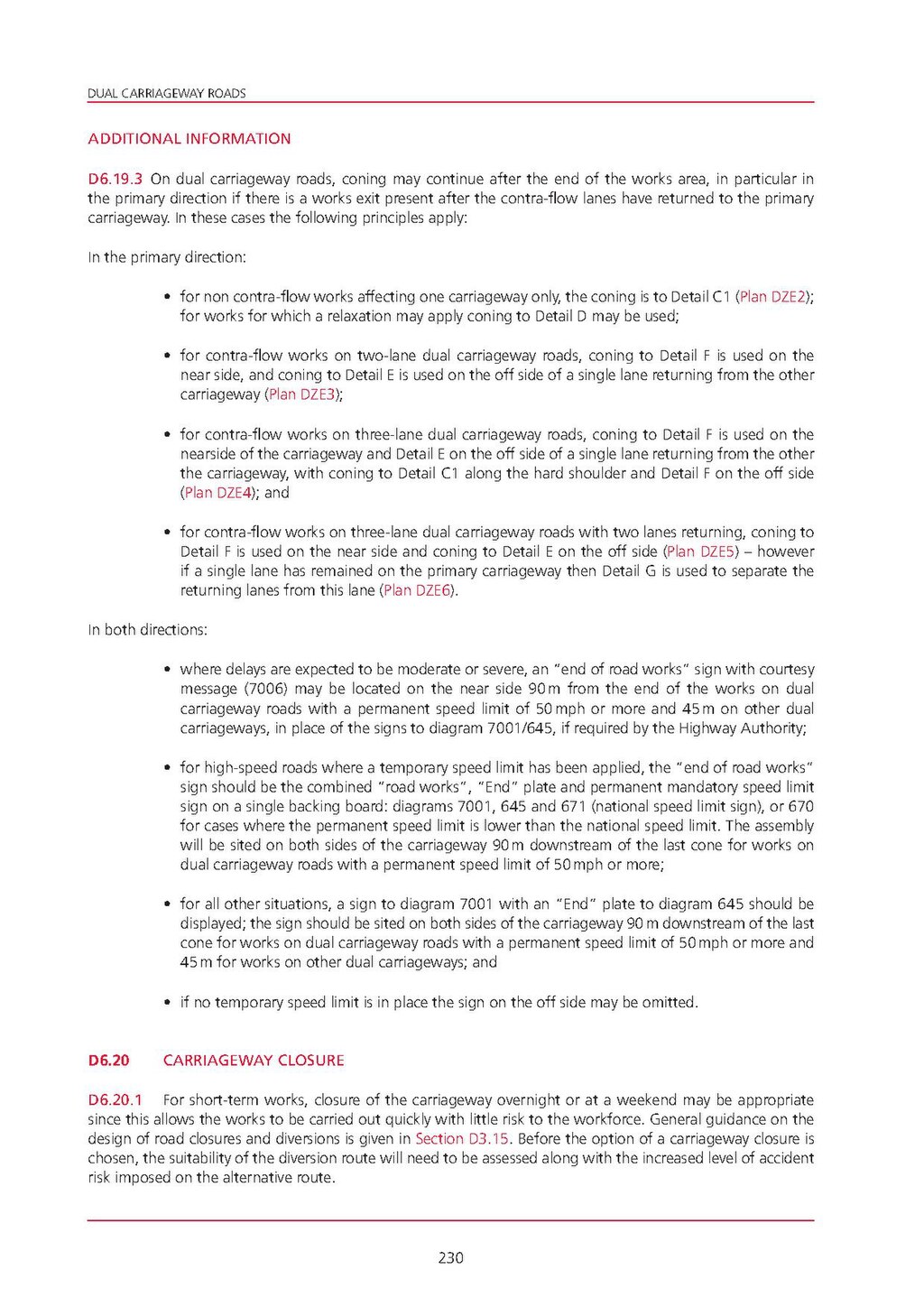ADDITIONAL INFORMATION
D6.19.3 On dual carriageway roads, coning may continue after the end of the works area, in particular in the primary direction if there is a works exit present after the contra-flow lanes have returned to the primary carriageway. In these cases the following principles apply:
In the primary direction:
- for non contra-flow works affecting one carriageway only, the coning is to Detail C1 (Plan DZE2), for works for which a relaxation may apply coning to Detail D may be used,
- for contra-flow works on two-lane dual carriageway roads, coning to Detail F is used on the near side, and coning to Detail E is used on the off side of a single lane returning from the other carriageway (Plan DZE3),
- for contra-flow works on three-lane dual carriageway roads, coning to Detail F is used on the nearside of the carriageway and Detail E on the off side of a single lane returning from the other the carriageway, with coning to Detail C1 along the hard shoulder and Detail F on the off side (Plan DZE4), and
- for contra-flow works on three-lane dual carriageway roads with two lanes returning, coning to Detail F is used on the near side and coning to Detail E on the off side (Plan DZE5) — however if a single lane has remained on the primary carriageway then Detail G is used to separate the
returning lanes from this lane (Plan DZE6).
In both directions:
- where delays are expected to be moderate or severe, an "end of road works" sign with courtesy message (7006) may be located on the near side 90m from the end of the works on dual carriageway roads with a permanent speed limit of 50mph or more and 45m on other dual carriageways, in place of the signs to diagram 7001/645, if required by the Highway Authority,
- for high-speed roads where a temporary speed limit has been applied, the "end of road works" sign should be the combined "road works", "End" plate and permanent mandatory speed limit sign on a single backing board: diagrams 7001, 645 and 671 (national speed limit sign), or 670 for cases where the permanent speed limit is lower than the national speed limit. The assembly will be sited on both sides of the carriageway 90m downstream of the last cone for works on dual carriageway roads with a permanent speed limit of 50 mph or more,
- for all other situations, a sign to diagram 7001 with an "End" plate to diagram 645 should be displayed; the sign should be sited on both sides of the carriageway 90m downstream of the last cone for works on dual carriageway roads with a permanent speed limit of 50 mph or more and 45 m for works on other dual carriageways, and
- if no temporary speed limit is in place the sign on the off side may be omitted.
D6.20CARRIAGEWAY CLOSURE
D6.20.1 For short-term works, closure of the carriageway overnight or at a weekend may be appropriate since this allows the works to be carried out quickly with little risk to the workforce. General guidance on the design of road closures and diversions is given in Section D3.15. Before the option of a carriageway closure is chosen, the suitability of the diversion route will need to be assessed along with the increased level of accident risk imposed on the alternative route.
230
